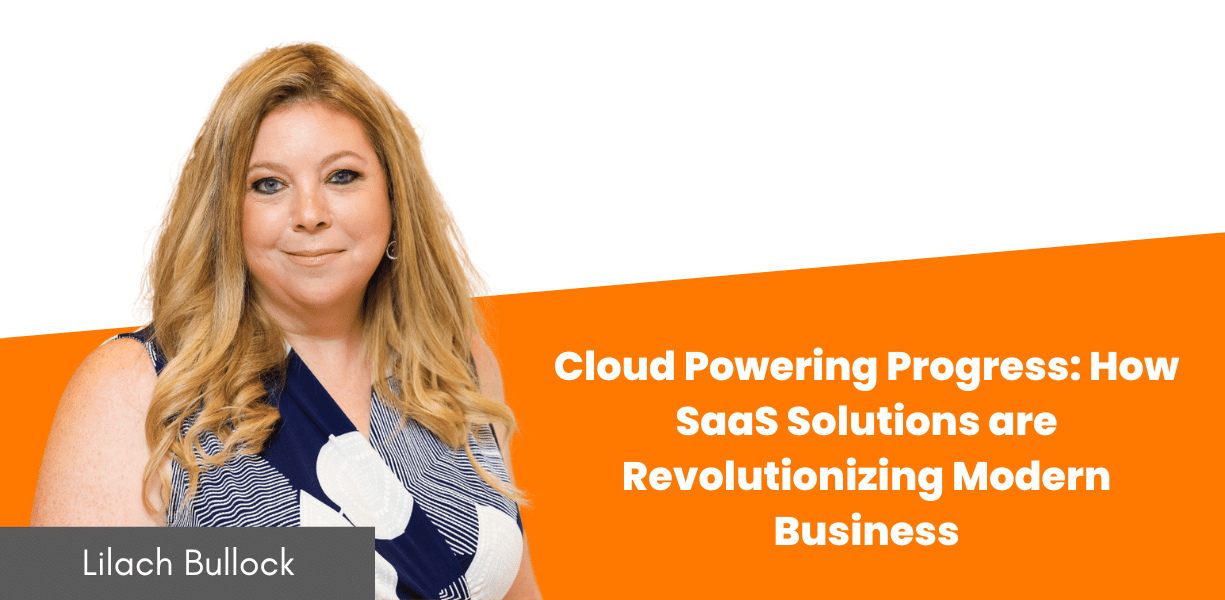Follow Lilach

Cloud Powering Progress: How SaaS Solutions are Revolutionizing Modern Business
In the modern era of technology, cloud computing has become a transformative force for businesses, regardless of their scale. The ability to access software, storage, and computing resources over the internet has revolutionized the way companies operate. In particular, software as a Service (SaaS) solutions have become increasingly popular, offering a cost-effective and scalable alternative to traditional on-premises software.
Flexibility and Scalability
One of the primary advantages of SaaS solutions is their flexibility and scalability. Unlike traditional software, SaaS applications are hosted in the cloud, allowing businesses to access them from anywhere with an internet connection. This enables remote work and collaboration, making it easier for teams to stay connected and productive, regardless of physical location.
Moreover, SaaS solutions are highly scalable, allowing businesses to quickly adjust their resources based on changing needs. This eliminates the need for expensive hardware upgrades or data center expansions, enabling companies to scale up or down without significant upfront investments.
Cost Savings and Efficiency
SaaS solutions offer significant cost savings compared to traditional software solutions. With SaaS, businesses pay a subscription fee, often based on the number of users or features required, eliminating the need for costly upfront licensing fees and ongoing maintenance costs. This pay-as-you-go model helps businesses manage their IT budgets and reduce capital expenditures.
Additionally, SaaS providers handle software updates, security patches, and server maintenance, freeing up valuable time and resources for businesses to focus on their core operations.
Collaboration and Integration
A key strength of SaaS solutions is their collaborative features, which enable teams to work together seamlessly. Cloud-based applications allow multiple users to access and edit documents in real-time, fostering better communication and streamlining workflows. Furthermore, SaaS solutions often integrate with other cloud-based applications and services, creating a seamless ecosystem that enhances productivity and efficiency.
One example of a powerful SaaS solution is an employee recognition tool, which can help organizations foster a positive work culture, boost morale, and retain top talent. Such tools enable businesses to celebrate and acknowledge the contributions of their employees, fostering a sense of appreciation and belonging within the workplace.
Security and Reliability
Data security and reliability concerns have been among the primary barriers to cloud adoption in the past. However, reputable SaaS providers invest heavily in robust security measures, including data encryption, access controls, and regular backups, ensuring that sensitive information remains safe and secure.
Moreover, SaaS solutions are designed for high availability and reliability, with redundant servers and failover mechanisms in place to minimize downtime and ensure uninterrupted access to critical applications and data. This level of reliability is essential for businesses that rely on their software solutions for daily operations and customer interactions.
Improved Agility and Time-to-Market
In today’s fast-paced business environment, agility and the ability to adapt quickly to changing market conditions are crucial. SaaS solutions give businesses the agility to rapidly deploy new applications and services without the lengthy procurement and implementation cycles associated with traditional software.
This increased speed to market empowers businesses to swiftly seize emerging opportunities, address customer needs, and maintain a competitive edge. Additionally, SaaS solutions can be easily scaled up or down as needed, allowing businesses to adapt their resources to match their evolving requirements.
Fostering Innovation and Growth
Businesses can free up valuable resources by leveraging SaaS solutions and redirect them towards innovation and growth initiatives. Instead of dedicating significant resources to maintaining and managing on-premises software, companies can focus on developing new products, services, and business models that drive revenue growth and enhance their competitive positioning.
Furthermore, SaaS providers are constantly innovating and introducing new features and functionalities, enabling businesses to stay up-to-date with the latest technologies and best practices without costly upgrades or migrations.
The Future of Business
As technology continues to evolve, SaaS solutions are poised to play an increasingly vital role in shaping the future of business. By embracing the cloud, companies can stay agile, reduce costs, and gain a competitive edge in an ever-changing market landscape. The cloud is no longer just a trend but a fundamental enabler of progress, empowering businesses to unlock new opportunities and drive innovation.

Follow Lilach















